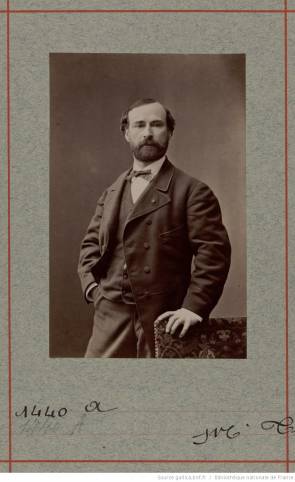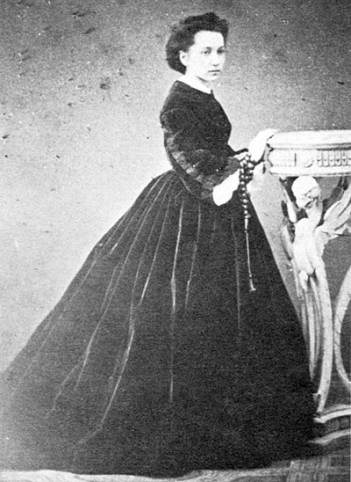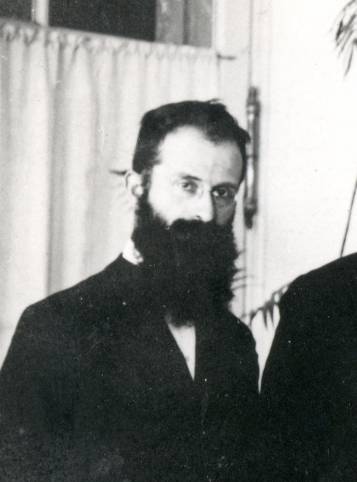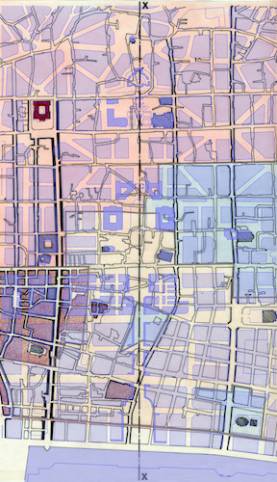ABSTRACT
The present paper examines the main biographical traits of the Italian author, politician and Risorgimento activist David Levi (1816-1898). Early in life, Levi abandoned the traditional religious spheres of Judaism but always remained attached to his Jewish heritage, as emerges from his oeuvre. Levi’s relevance derives from his constant effort to amalgamate Italian and Jewish identities in a context of increasing secularity. An analysis of his figure and activities, therefore enables us to investigate some crucial issues at the center of current historiographical debate, such as the nineteenth-century Jewish transition from a traditional to a modern identity, the discussion around the concepts of “assimilation”and “integration,” orientalist researches and the study of religions in nineteenth-century Italy, and the important role of Freemasonry and Saintsimonism in Levi’s; secularization modes. In fact, their concept of “Religion of Humanity” helped him to create a synthesis between Enlightenment’s aspirations to universalism and Risorgimento’s cosmopolitan nationalism.
Category: Focus
Focus
ABSTRACT
The essay outlines the biographies of Jacob and his son Tullo in the context of the history of the Mantuan Jews in the age of emancipation. Giacobbe came from a family of the Jewish élite and was brought up to the Enlightenment ideas and to the principles of 1789. Following the path, which had been opened in Mantua by rabbis Simone Calimani and Jakob Rafael Jacob Saraval, Giacobbe turned toward the ideal of the reconcilability of faith with reason, in tune with prevailing tendencies also within non-Jewish bourgeoisie. The inclination to reduce religion to the “love of the neighbor” brought Giacobbe to the more or less explicit recognition of the equivalence of different faiths, which mirrored at a cultural level the social integration between Jewish elites and non-Jewish bourgeoisie.
Tullo’s detachment from traditional faith was even more radical, however a strong need for a faith survived and this was satisfied by the conversion to the religion of the nation. In this sense you can talk of a marked “assimilazionismo.” The animated opposition showed by Tullo in the 1890s against any proposals to make a Jewish identity reviving can be explained by his fear for the centrifugal tendencies, which – along with the escalation of the class struggle – could have endangered the unity of the new State. Massarani was obsessed with these risks and he consequently acted in order to prevent them.
ABSTRACT
In the nineteenth and the first half of the twentieth century, Italy held a strong appeal for Russian travelers. Several of these Russian émigrés were women of Jewish lineage, who had come with their families or were sent abroad on their own in order to complete their education at one of the newborn kingdom’s prestigious universities. Elena Raffalovich (Odessa 1842 – Florence 1918) is one of the earliest and most intriguing examples of this phenomenon. While her intellectual trajectory, as a pioneer in children’s education and an advocate of women’s rights, is representative of that of many other Russian Jewish women living in Italy at that time, it also challenges a number of historiographic commonplaces about Jewish women and their emancipation process in nineteenth-century Europe. Moreover, through the archives of different prominent members of the Raffalovich dynasty, it is possible to follow its vicissitudes over at least five generations, completing our knowledge of Elena’s biography and reassessing the importance of her intellectual contribution to Italian culture.
ABSTRACT
This paper examines Bernardo Dessau’s activities within the Zionist movement in the years between the end of the Nineteenth century and the first two decades of the Twentieth century. Dessau’s important contribution is still little-known and under-explored even by the most recent historiographical studies on Zionism in Italy.
More specifically, this essay will investigate Dessau’s intellectual and propagandistic commitment towards the realization of the Zionist ideal, his views on the main concepts and issues put forward by the Jewish movement of national rebirth and his responses and reactions to the major historical events which affected, both directly and indirectly, the Jewish community in Italy and abroad in the period before the outbreak of the First World War.
In this research two different types of source have been scrutinized and evaluated: on the one hand, printed publications such as articles and pamphlets, and on the other, the private correspondence between Bernardo Dessau and Felice Ravenna, President of the Italian Zionist Federation, all of which is kept in the Central Zionist Archives in Jerusalem.
ABSTRACT
This essay focuses on Alfonso Pacifici, leader at the forefront of the Jewish cultural revival movement in Italy in the first decades of the XX century. His figure and his philosophy represent a privileged focus through which it is possible to identify and follow the evolution of various intertwined aspects of the Jewish experience in post-emancipated Italy, such as: the elaboration of the Kulturdebatte within Italian Zionism; the development of a form of Jewish nationalism, as well as the dilemmas and the complicated dynamics that shaped the national identity of Italian Jews, torn between their allegiance as Jews and as Italians.
ABSTRACT
The present article focuses on Laura Orvieto’s intellectual development, asking about the chances, but also the barriers in the life of the sophisticated Italian-Jewish writer. Based on documents from the Orvieto archives in Florence, the Rosselli archives in Turin, as well as selected writings by Laura Orvieto, the contribution examines the protagonist’s access to scholarship and learning in liberal, post-emancipated Italy, where Orvieto gained considerable success and public acclaim both as journalist and writer. At the same time, the article questions the free intellectual’s “success story” by looking at the marginalization and eventual exclusion of the seemingly well-integrated Jewish woman from Italian society during Fascism.
ABSTRACT
Until 1944 Salonika was also known as the Jerusalem of the Balkans for its predominantly Jewish population. In August 1917 however, late Ottoman Salonika was ravaged by a great fire which destroyed most of its oldest synagogues. This article is an attempt to survey the “state of the art” on the sources available concerning the architecture and urban role of Salonika’s lost synagogues. The authors’ thesis, requiring further research, is that these synagogues played a poleogenetic role, in fostering both a settlement structure and cohesion of the social edifice.
ABSTRACT
In late August 1861 Giuseppe Nacamulli published the first issue of his bi-lingual (Greek-Italian) newspaper Ισραηλιτικά Χρονικά/Cronaca Israelitica thereby inaugurating the first Jewish newspaper in the Greek speaking world. The appearance of a newspaper that advocated for full civil and political rights for Ionian Jews did not go unnoticed and provoked numerous responses of varying degrees of hostility and indeed praise. This article examines these responses within two broader contexts, namely the political and social ferment of the final years of British rule and the long-term, and often tense, co-existence of Jews and Christians on the islands.
ABSTRACT
This article examines the antisemitic attitudes among the Lutheran clergy in Finland during the latter part of the 19th century. The Jewish question was discussed at the Finnish Diet by the estate of the clergy in order to determine if Jews could become Finnish citizens. By the majority vote this was considered undesirable. Adolf Stoecker’s antisemitic ideology, his the ideas of a Jewish conspiracy for world dominance, found Finnish support.
ABSTRACT
This article examines the life and works of Hajim S. Davičo in the context of the history of Serbian Jews, of the “Court Jew” Davičo family and of the Serbian and Triestine context of the late 19th and early 20th century. Hajim Davičo was an active proponent of linguistic acculturation, and in his career as a diplomat he proved total devotion to Serbian national cause, to the brink of complete assimilation. Indeed, his national allegiance put Davičo in the position to interfere even in the matters of the Serbian-Orthodox Church. The provisions of the Berlin congress, the Davičo family background and the need of Serbian bureaucracy for capable and educated men, have all contributed to the rise of this Serbian Jewish diplomat in less than two decades after the emancipation of Jews in Serbia.




